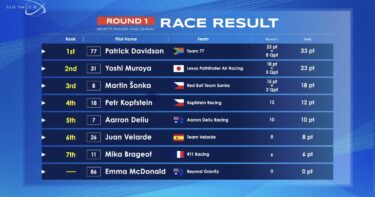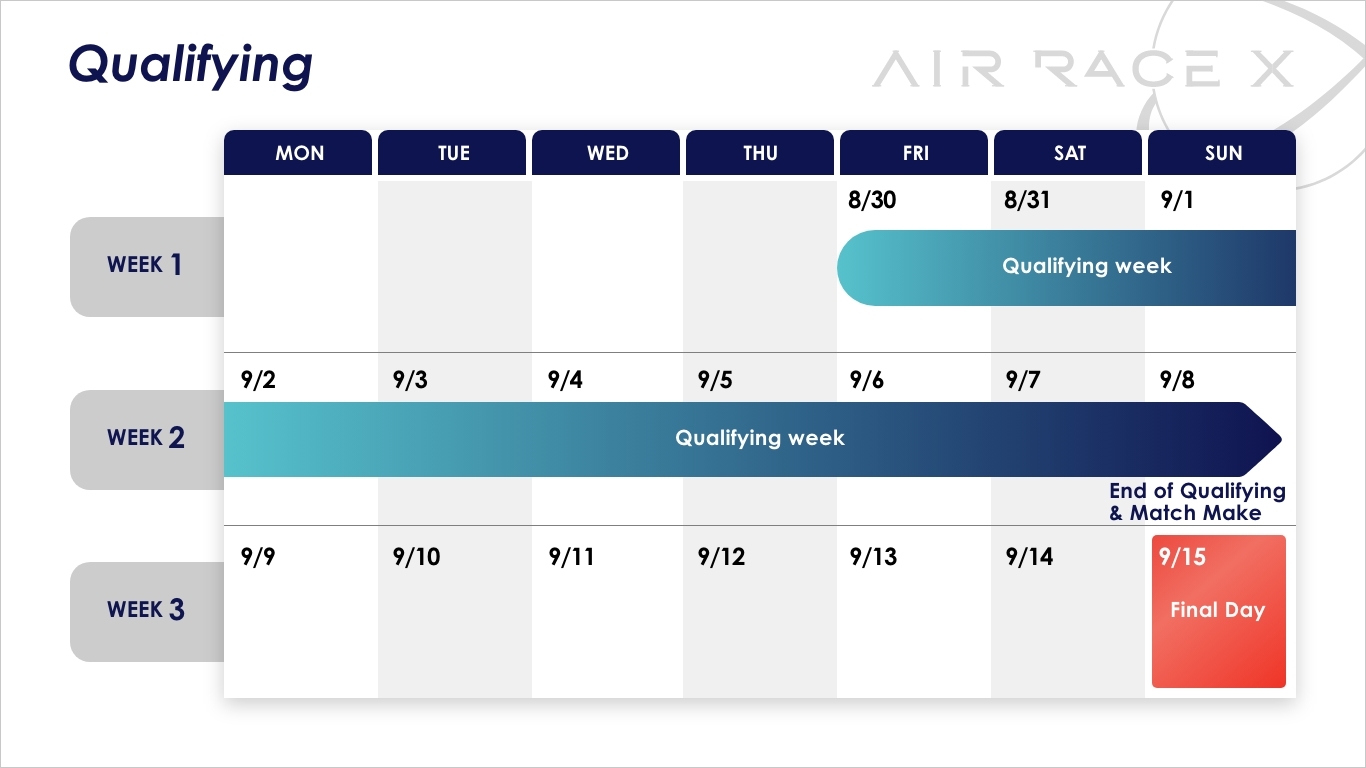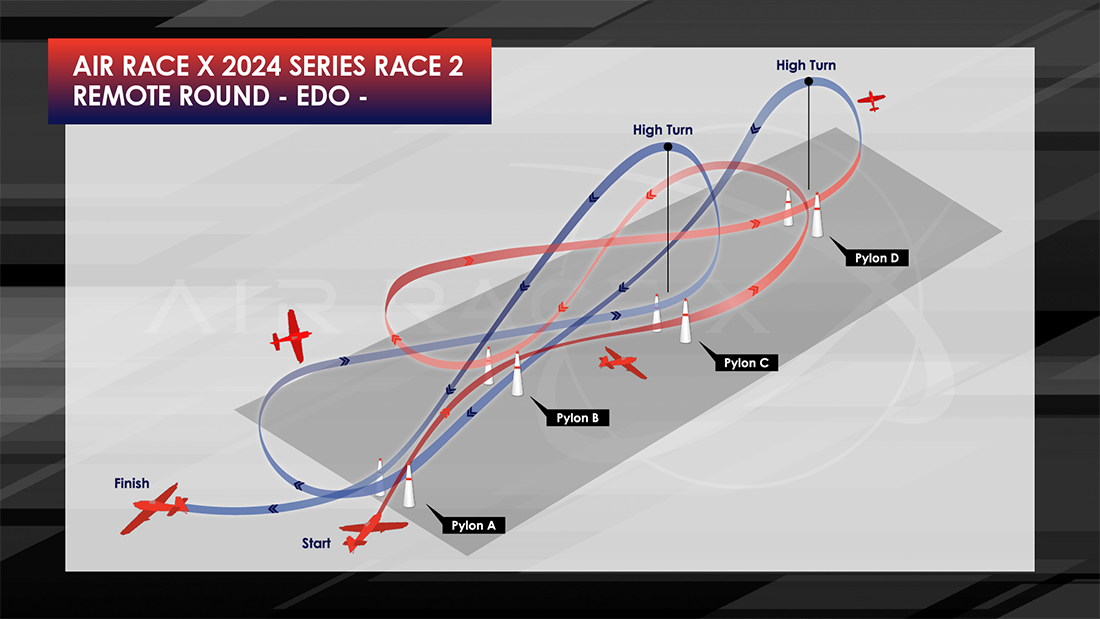RACE 2 SEP 15 REMOTE ROUND
NEWS
-

Round 3|Official Finals Results Announced
more detail
-

Round 3|Official Qualifying Results Announced
more detail
-

Round 2 Report|Title Defender Muroya Claims First Win of the Season, Outpaces Rising Star Deliu to Take Championship Lead
more detail
-

“Flying Race Planes” to Appear in Future City Osaka – Umekita! New-Era Motorsport “AIR RACE X” Lands in Osaka on Saturday, September 6
more detail
SCHEDULE

RACETRACK

The racetrack takes place in a district of Tokyo, centered around a bridge over a river and its surrounding area. Pilots will navigate through four pylons and ten gates in about 60 seconds.
The race starts by passing Pylon A at a speed limit of approximately 370 km/h (200 kt). The approach should be slightly angled rather than head-on to allow a straight path toward Pylon B.
The section from Pylon B to Pylon C curves slightly to the right, requiring the aircraft to be swung to the right while flying. During this maneuver, it’s also important to consider the approach to Pylon D, located on the bridge, to fly the shortest distance possible, which will require precise line selection.
From Pylon C to Pylon D, the racetrack heads towards the leftmost pylon, requiring a significant left turn.
The route from Pylon D back to Pylon B involves a "low turn," which has a minimum altitude restriction of 250 ft (approximately 76 m).
During the turn, there is a possibility of reaching up to 12G, the maximum allowed by the rules, and exerting too much G-force can slow down the speed. The pilot's skill in timing the turn and precisely controlling the G-forces is crucial.
The section from Pylon D to Pylon B, the goal is to accelerate the aircraft while minimizing G-forces. After passing Pylon B, the pilot must quickly execute a flat turn to return to Pylon D. This section is relatively easy to navigate, but due to the high speed, careful turn control is essential to avoid a wide turn.
From Pylon D to Pylon B and then to Pylon A, a "high turn" begins, with a minimum altitude requirement of 500 ft (approximately 152 m). While flying straight, the pilot turns towards Pylon A. Considering the next maneuver, the approach is likely to be slightly from the right to smoothly head towards Pylon A while descending.
From Pylon A to Pylon C, the pilot performs a right-hand low turn, followed by a vertical pull-up, and then a high turn towards the final gate, Pylon A, to reach the finish line.
The key to winning this race is in the "turns." By mastering the entry angles into the gates and effectively executing the turns, pilots can potentially reduce their time by about 0.5 seconds.
The various turns condensed into approximately 60 seconds require not only passing through the gates but also continuously planning routes towards the next gate with meticulous control. The thrill of an air race lies in the precise maneuvers of the pilots demonstrating their skilled flights.
G-forces
If the G-force reaches 10G, the load on a person weighing 50 kg would be 500 kg. At the maximum of 12G, which is the limit for both regulations and aircraft structure, the calculation becomes "body weight × 12," resulting in a load of 600 kg. Regarding G-forces in air races, those who have experienced aerobatic flight describe it as “feeling an immense pressure compressing the body from below.”
Knots
A knot is a unit of speed used for ships and aircraft, often abbreviated as "kt." One knot equals 1.852 km/h, representing the speed of traveling one nautical mile (1.852 km) per hour. For example, a tanker seen at sea travels at about 12 knots, and a boat can reach around 40 knots, while an air race aircraft flies at about five times the speed of a boat.
Low turns and high turns
The minimum altitude requirements differ: low turns have a minimum altitude of 250 ft, while high turns require a minimum altitude of 500 ft. Additionally, high turns are characterized by a more vertical maneuver, aiming to reach 500 ft as quickly as possible.
RESULTS
Provisional qualifying results are updated in real time during the qualifying week.
Final results are released as soon as the race program broadcast on Final Day is completed.

